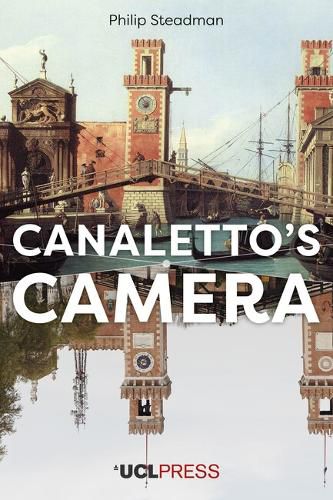Readings Newsletter
Become a Readings Member to make your shopping experience even easier.
Sign in or sign up for free!
You’re not far away from qualifying for FREE standard shipping within Australia
You’ve qualified for FREE standard shipping within Australia
The cart is loading…






Did Canaletto paint what he saw, or what he wanted us to see? Exploring the boundary between observation and invention. Canaletto's Camera provides a revelatory look at how the Venetian master Antonio Canaletto (1697-1768) used the camera obscura, a precursor to the modern camera, to create his meticulous cityscapes. Drawing on new research, Steadman examines Canaletto's connections to contemporary scientists and his reliance on measured architectural drawings, discovering previously unrecognized techniques that shaped his iconic views of Venice and London.
By analyzing Canaletto's sketches and reconstructing an 18th-century camera obscura, Steadman and his colleagues have recreated the artist's process, demonstrating how he traced real scenes, altered them in his finished works, and even engaged in a form of early photomontage. Through digital overlays and side-by-side comparisons with contemporary photographs, the book challenges assumptions about Canaletto's realism and artistic manipulation.
Lavishly illustrated and deeply engaging, Canaletto's Camera is a compelling read for art historians, scholars of optical devices, and those fascinated by the intersection of art and science.
$9.00 standard shipping within Australia
FREE standard shipping within Australia for orders over $100.00
Express & International shipping calculated at checkout
Did Canaletto paint what he saw, or what he wanted us to see? Exploring the boundary between observation and invention. Canaletto's Camera provides a revelatory look at how the Venetian master Antonio Canaletto (1697-1768) used the camera obscura, a precursor to the modern camera, to create his meticulous cityscapes. Drawing on new research, Steadman examines Canaletto's connections to contemporary scientists and his reliance on measured architectural drawings, discovering previously unrecognized techniques that shaped his iconic views of Venice and London.
By analyzing Canaletto's sketches and reconstructing an 18th-century camera obscura, Steadman and his colleagues have recreated the artist's process, demonstrating how he traced real scenes, altered them in his finished works, and even engaged in a form of early photomontage. Through digital overlays and side-by-side comparisons with contemporary photographs, the book challenges assumptions about Canaletto's realism and artistic manipulation.
Lavishly illustrated and deeply engaging, Canaletto's Camera is a compelling read for art historians, scholars of optical devices, and those fascinated by the intersection of art and science.